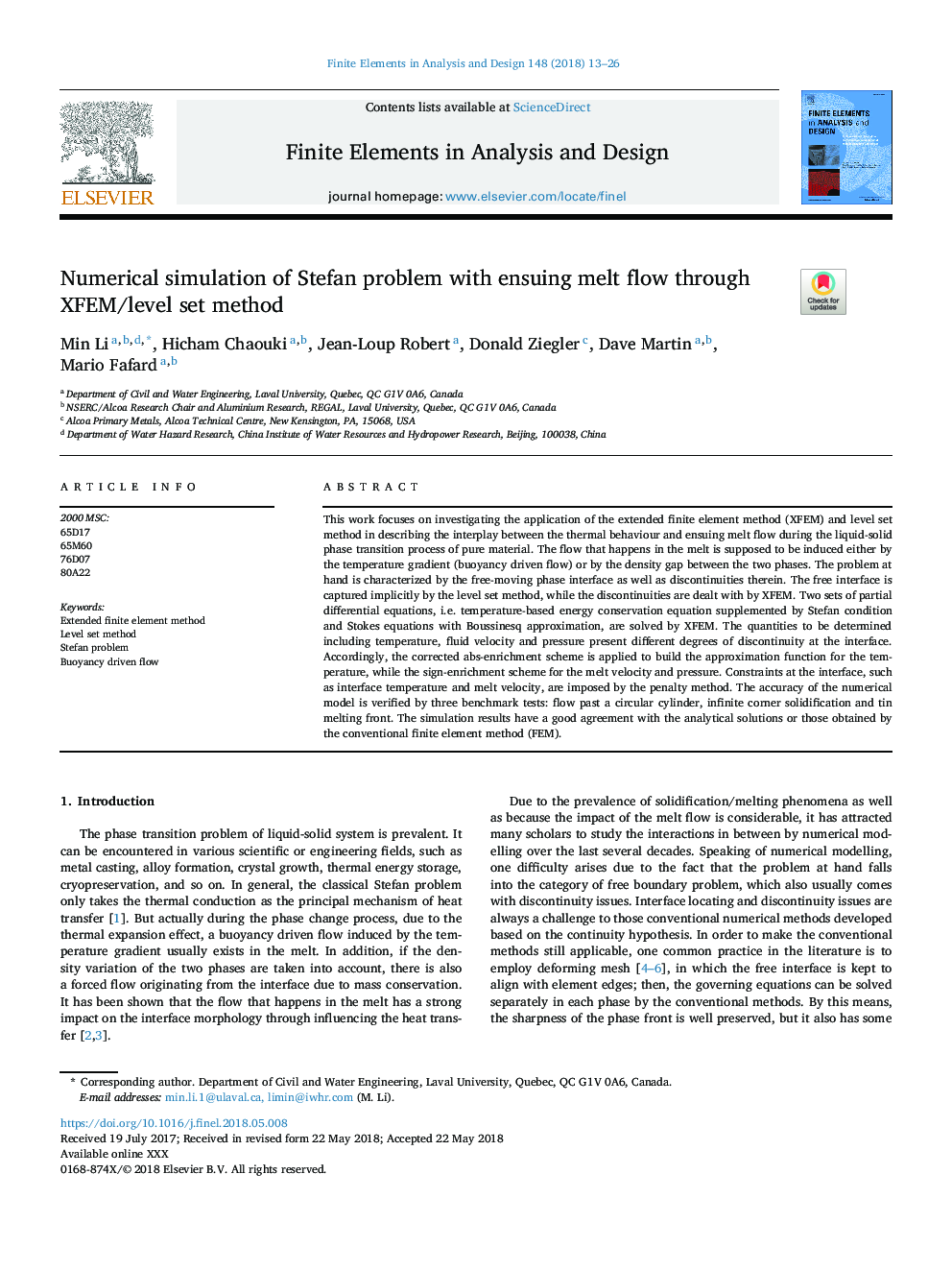| Article ID | Journal | Published Year | Pages | File Type |
|---|---|---|---|---|
| 6925236 | Finite Elements in Analysis and Design | 2018 | 14 Pages |
Abstract
This work focuses on investigating the application of the extended finite element method (XFEM) and level set method in describing the interplay between the thermal behaviour and ensuing melt flow during the liquid-solid phase transition process of pure material. The flow that happens in the melt is supposed to be induced either by the temperature gradient (buoyancy driven flow) or by the density gap between the two phases. The problem at hand is characterized by the free-moving phase interface as well as discontinuities therein. The free interface is captured implicitly by the level set method, while the discontinuities are dealt with by XFEM. Two sets of partial differential equations, i.e. temperature-based energy conservation equation supplemented by Stefan condition and Stokes equations with Boussinesq approximation, are solved by XFEM. The quantities to be determined including temperature, fluid velocity and pressure present different degrees of discontinuity at the interface. Accordingly, the corrected abs-enrichment scheme is applied to build the approximation function for the temperature, while the sign-enrichment scheme for the melt velocity and pressure. Constraints at the interface, such as interface temperature and melt velocity, are imposed by the penalty method. The accuracy of the numerical model is verified by three benchmark tests: flow past a circular cylinder, infinite corner solidification and tin melting front. The simulation results have a good agreement with the analytical solutions or those obtained by the conventional finite element method (FEM).
Keywords
Related Topics
Physical Sciences and Engineering
Computer Science
Computer Science Applications
Authors
Min Li, Hicham Chaouki, Jean-Loup Robert, Donald Ziegler, Dave Martin, Mario Fafard,
